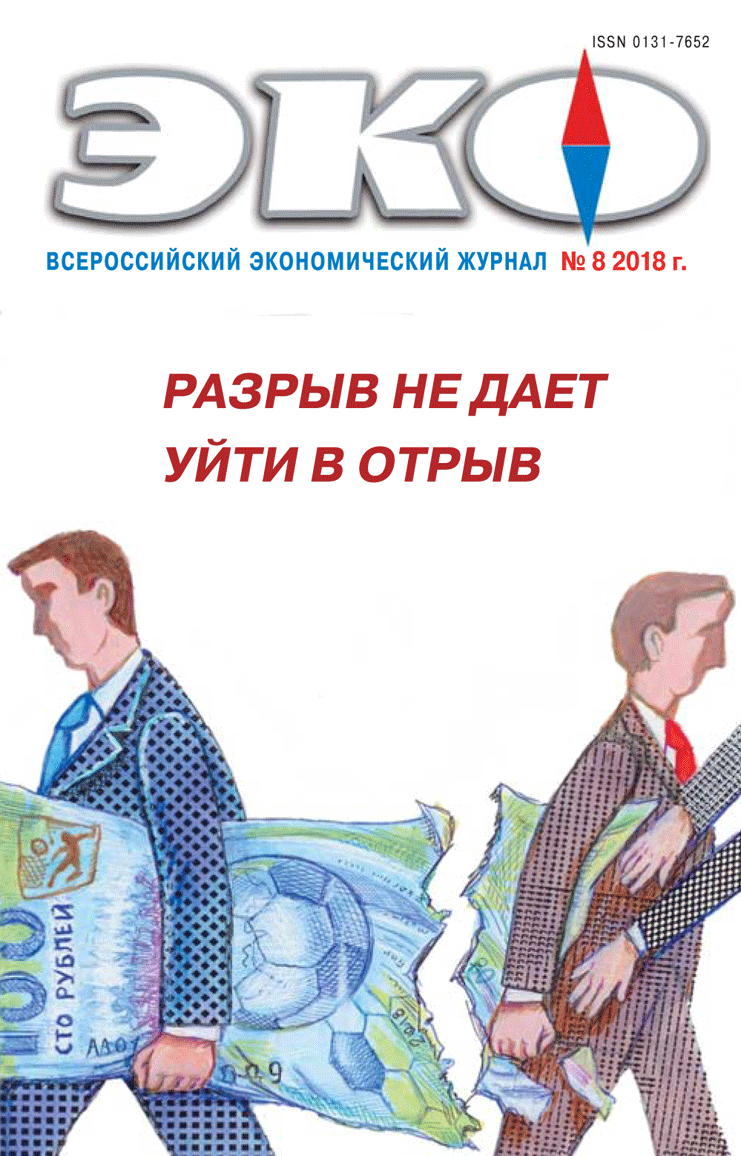COVER STORY: THE GAP HOLDS BACK
Published 2018-09-14
Keywords
- BUDGET,
- TAX AND NON-TAX REVENUES,
- INTERGOVERNMENTAL FISCAL RELATIONS,
- FINANCIAL FLOWS,
- REVENUE AND EXPENDITURE STRUCTURE
- NOVOSIBIRSK,
- MAJOR CITIES,
- TRANSFERS ...More
How to Cite
1.
Klistorin В, Sumskaya Т. Budgetary Problems of a Large City: the Case of Novosibirsk. ECO [Internet]. 2018 Sep. 14 [cited 2025 Nov. 22];48(8):23-3. Available from: https://ecotrends.ru/index.php/eco/article/view/1641
Abstract
The paper considers the key factors and conditions which define concentration of the population and economic activity observed in major cities and agglomerations of the Russian Federation, and it shows that the Russian budgetary regulatory environment and policy play an important role in the advancing development of large cities along with well-known factors such as market volumes, a higher quality of labor, scale effects, higher innovative activity due to competition, and etc. To analyze the expenses of the RF budget system made in a city, the authors carried out a case study for a city budget of Novosibirsk and it shows that the expenses of the city budget make no greater than 1/3 of total expenses of the Rf budgetary system made in the city. The analysis of the Novosibirsk budget allows revealing key tendencies in dynamics of the budgetary indicators. The paper analyzes the structure of the city budget to show whether the city budget is well provided with its own revenues and how it depends on the transfers from the regional budget. The authors also consider the possibilities of how to use the budgetary resources to find major directions of expenditures made in territories of the city.References
1.
Буфетова А. Н. Структура урбанизации и тенденции внутрирегиональной дифференциации уровня жизни.//Вестник НГУ. Серия: Социально-экономические науки. 2013. -Т. 13. Вып. 1. С. 57-66.
2.
Зубаревич Н. В. Города на постсоциалистическом пространстве//Общественные науки и современность. 2010. № 5. С. 5-19.
3.
Клисторин В. И. Финансовые ресурсы местного самоуправления//ЭКО. 2014. № 9. С. 5-19.
4.
Клисторин В. И., Губенко Д. В., Сумская Т. В. Влияние бюджетной политики на экономический рост и развитие регионов//Региональное и муниципальное управление: диагностика, планирование и мониторинг социально-экономического развития регионов Сибири/Под ред. А. С. Новосёлова, В. Е. Селиверстова; ИЭОПП СО РАН. Новосибирск: Изд-во ИЭОПП СО РАН, 2016. Гл. 4. С. 157-196.
5.
Коломак Е. А. Развитие городской системы России: тенденции и факторы//Вопросы экономики. 2014. № 10. С. 82-96.
6.
Коломак Е. А., Крюков В. А., Мельникова Л. В., Селиверстов В. Е., Суслов В. И., Суслов Н. И. Стратегия пространственного развития России: ожидания и реалии//Регион: экономика и социология. 2018. № 2. С. 264-287.
7.
Мельникова Л. В. Размеры городов, эффективность и ЭКОномический рост//ЭКО. 2017. № 7. С. 5-19.
8.
Сумская Т. В. Проблемы бюджетной обеспеченности крупных городов//Могущество Сибири будет прирастать!?: сб. докладов межд. науч. форума Образование и предпринимательство в Сибири: направления взаимодействия и развития регионов (Новосибирск, 12-13 окт. 2017 г.): в 4-х т./М-во обр. и науки РФ, РФФИ, Пр-во Новосиб. обл., Новосиб. гос. ун-т экономики и управления. -Новосибирск: НГУЭУ, 2018. -Т. 2. -С. 94-100.

